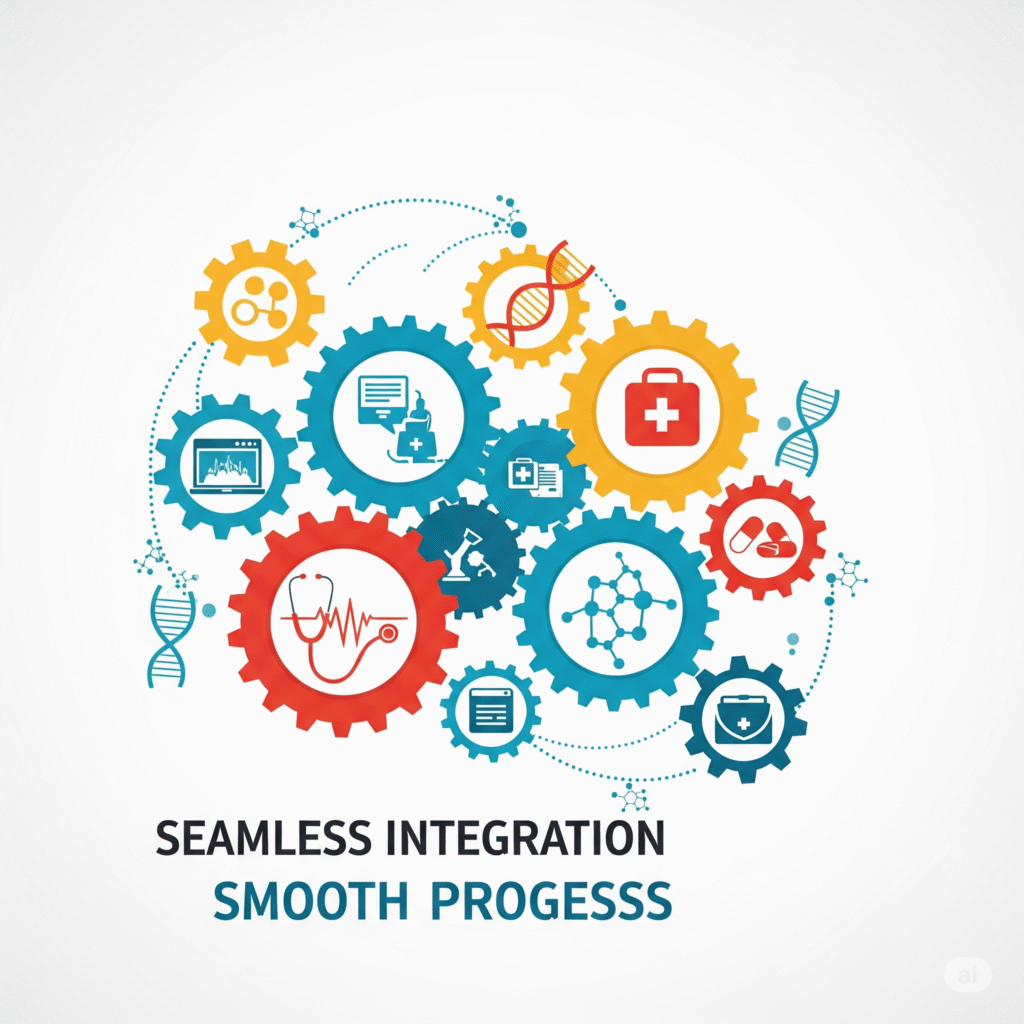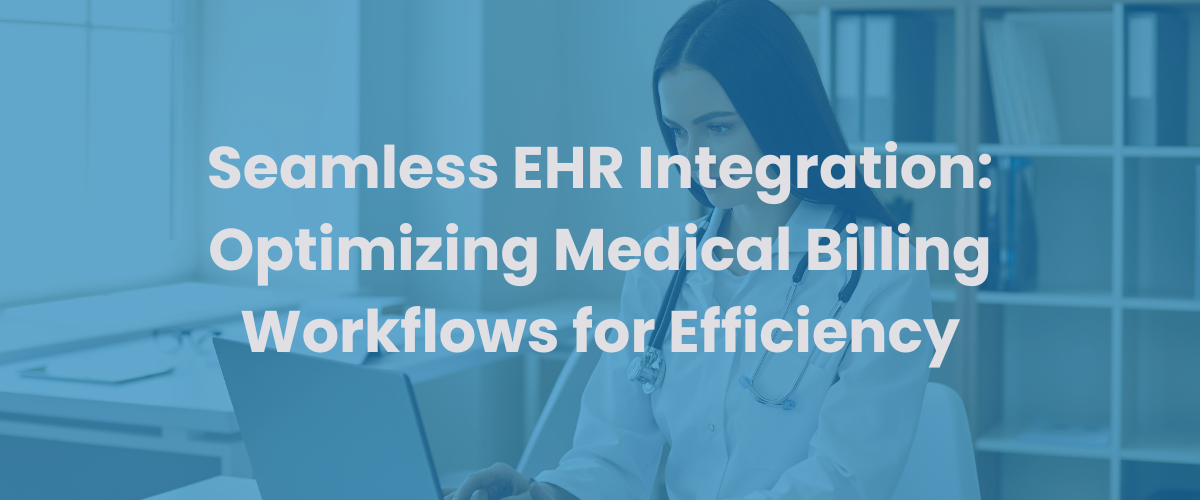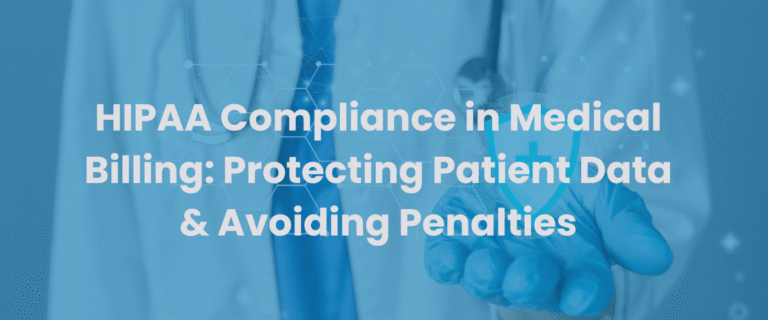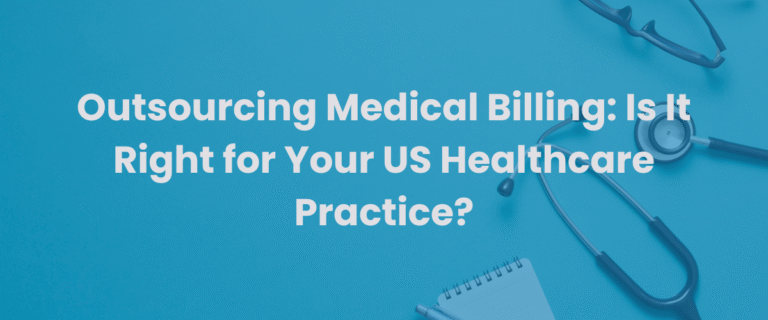In today’s fast-paced US healthcare landscape, efficiency is not just a buzzword – it’s a lifeline. For medical practices striving to deliver exceptional patient care while maintaining financial health, disjointed systems and manual workflows can be a significant drain on resources. The key to unlocking peak operational efficiency and maximizing your revenue cycle lies in one powerful solution: seamless EHR (Electronic Health Record) integration with your medical billing workflows.
Imagine a world where patient data flows effortlessly from intake to invoicing, where claim denials are significantly reduced, and reimbursement happens faster. This isn’t a pipe dream; it’s the reality that integrated EHR and medical billing systems offer to US healthcare providers.
What is Seamless EHR Integration in Medical Billing?
At its core, EHR integration is the process of connecting your Electronic Health Record system with your medical billing system and other administrative platforms (like practice management software, scheduling, and patient portals). “Seamless” means this connection is fluid, automatic, and bi-directional, minimizing manual data entry and ensuring consistency across all points of the patient journey.
Instead of your clinical team entering data into the EHR and your billing team re-entering much of the same information into a separate billing system, an integrated solution allows for a continuous, real-time flow of critical data, from demographics and insurance information to diagnoses and procedures.
Why Seamless Integration is Critical for US Practices
The benefits of a truly integrated system extend far beyond simple convenience. For US medical practices, seamless EHR integration is a strategic imperative for:
- Enhanced Accuracy & Reduced Errors: Manual data entry is prone to human error. Integration eliminates redundant data input, significantly reducing mistakes in patient demographics, insurance information, diagnostic codes (ICD-10), and procedure codes (CPT). Fewer errors mean fewer claim denials and faster processing.
- Improved Efficiency & Productivity: Automation is the cornerstone of efficiency. Integrated systems automate tasks like eligibility verification, charge capture, and claim submission, freeing up your administrative and billing staff to focus on more complex tasks, like denial management and patient follow-up.
- Accelerated Revenue Cycle Management (RCM): Faster, more accurate data flow directly translates to a healthier bottom line. Real-time access to patient and clinical data expedites everything from front-end eligibility checks to back-end payment posting, leading to quicker reimbursements and improved cash flow.
- Better Patient Experience: A streamlined administrative process means less paperwork and waiting for patients. Accurate billing and clear communication, facilitated by integrated systems, lead to greater patient satisfaction and trust.
- Robust Data Analytics & Reporting: With all data in one centralized system, it becomes easier to generate comprehensive reports. You can track key performance indicators (KPIs), identify trends, analyze payer performance, and gain deep insights into your financial health, empowering data-driven decision-making.
- Enhanced Compliance & Security: Integrated systems often come with built-in compliance features, ensuring adherence to HIPAA regulations and other industry standards. Centralized data management also enhances security protocols, protecting sensitive patient health information (PHI).

Key Areas Where EHR Integration Optimizes Billing Workflows
Let’s look at how integration transforms specific stages of your medical billing workflow:
1. Patient Registration & Eligibility Verification
In an integrated system, patient demographic and insurance information entered during scheduling or check-in automatically populates the billing system. Real-time eligibility checks are performed instantaneously, identifying coverage gaps or out-of-pocket costs upfront, preventing future denials and improving patient collections.
2. Charge Capture & Coding
As clinicians document services in the EHR, the system can automatically suggest CPT codes and ICD-10 codes based on the recorded diagnoses and procedures. This direct linkage minimizes missed charges and coding errors, ensuring all billable services are captured accurately at the point of care.
3. Claims Submission & Denial Management
Integrated systems facilitate automated claim scrubbing, where claims are checked for errors and inconsistencies against payer rules before submission. This proactive approach drastically reduces first-pass claim denial rates. For any denials that do occur, the integrated system provides robust tracking and tools for efficient denial appeals.
4. Payment Posting & Reconciliation
Electronic Remittance Advice (ERA) from payers can be automatically posted to patient accounts in the billing system, which then updates the EHR. This eliminates manual payment posting, reduces errors, and speeds up the reconciliation process.
5. Reporting & Analytics
A unified system provides a holistic view of your practice’s performance. Generate detailed reports on denial trends, AR days, payer reimbursement rates, and service line profitability to identify areas for improvement and make strategic decisions for revenue cycle optimization.
Common Challenges of EHR Integration
While highly beneficial, EHR integration isn’t without its hurdles:
- Vendor Compatibility: Not all EHRs and billing systems “play nice” together. Ensuring seamless interoperability requires careful planning and potentially custom interfaces.
- Data Migration: Transferring historical data accurately and securely from old systems to a new integrated one can be complex.
- Staff Training & Adoption: Any new system requires comprehensive training. Staff resistance to change or inadequate training can hinder successful implementation.
- Cost: Initial investment in integrated solutions and potential customization can be significant.
AtMedBilling: Your Partner for Seamless EHR Integration
Navigating the complexities of EHR integration and medical billing optimization can be daunting for US medical practices. This is where AtMedBilling shines. We specialize in providing end-to-end revenue cycle management solutions that are designed for seamless integration with your existing EHR system.
Our expert team understands the nuances of various EHR platforms and works diligently to create a customized integration strategy that fits your practice’s unique needs. We ensure that your clinical and financial data communicates effectively, minimizing manual intervention and maximizing efficiency.
Our services include:
- Expert Integration Consulting: Guiding you through the best integration pathways for your specific EHR.
- Automated Workflow Design: Streamlining your processes from patient intake to payment posting.
- Proactive Denial Management: Leveraging integrated data to prevent claims issues before they arise.
- Robust Reporting & Analytics: Providing clear, actionable insights into your RCM performance.
- Dedicated Support: Ensuring your team is fully trained and supported throughout the transition and beyond.
Testimonials: Realizing Efficiency
“Integrating our EHR with AtMedBilling’s billing services has been a game-changer. The seamless data flow has drastically cut down our claim denials and accelerated our reimbursements. Their expertise made the transition incredibly smooth, and our staff are much more efficient.” — Dr. Emily Carter, Pediatrician, Austin, TX
“We struggled with manual data entry and disjointed workflows for years. AtMedBilling’s EHR integration solution has transformed our entire medical billing process. Our clean claim rate is higher than ever, and we have real-time visibility into our revenue cycle. It’s truly optimized our practice efficiency.” — David Kim, Practice Administrator, Urgent Care Clinic, Miami, FL
Optimize Your Practice’s Future
In the competitive US healthcare environment, achieving operational efficiency and financial stability requires intelligent solutions. Seamless EHR integration with your medical billing workflows is not just an upgrade; it’s a fundamental shift that empowers your practice to streamline operations, boost revenue, and enhance patient care.




